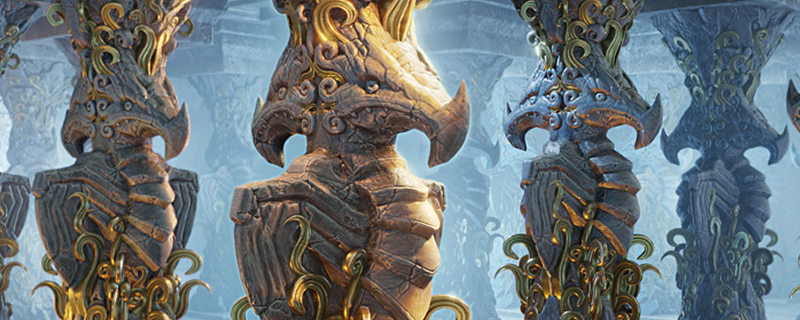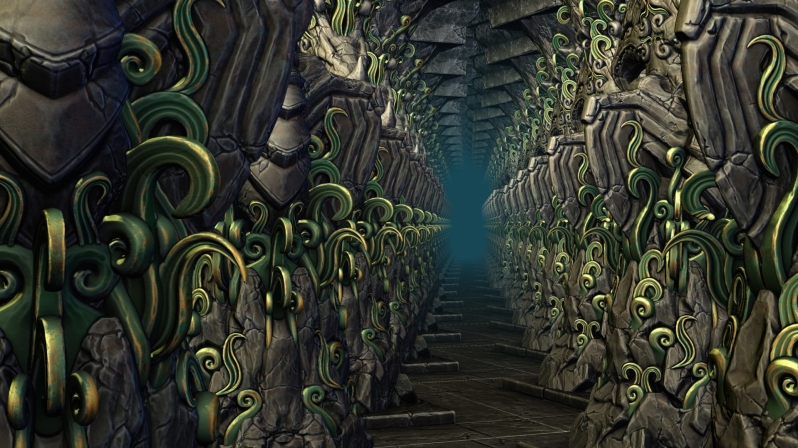UL Benchmarks brings its Mesh Shader Feature Test to 3DMARK
UL Benchmarks brings its Mesh Shader Feature Test to 3DMARKÂ
Microsoft’s DirectX 12 Ultimate API brings several new GPU features to the forefront, setting a new baseline for next-generation game development that includes Ray Tracing (with DXR 1.1), Mesh Shaders, Sampler Feedback and Variable Rate Shading (VRS) as standard features.Â
As the world’s premier PC benchmark provider, UL Benchmarks are working on next-generation benchmarking tools that utilise these features, having already created dedicated Ray Tracing and Variable Rate Shading feature tests for consumers and hardware vendors. Today, UL has added their Mesh Shader feature test to 3DMARK, highlighting the usefulness of this new graphics feature.Â
What is a Mesh Shader?Â
Mesh Shaders are a new way for developers to tackle geometry processing, allowing for simplified graphics pipelines, allowing software creators to have more control and flexibility over their work.Â
With Mesh Shaders, developers can split meshes into smaller meshlets and process these meshlets in parallel, enabling increased performance levels and higher levels of hardware efficiency. This technique can also be beneficial for geometry culling, ensuring that only visible meshlets are shaded.Â
Support for Mesh Shaders is currently available on Nvidia’s Turing GPUs, AMD’s RDNA 2 GPU, Microsoft’s Xbox Series consoles and Intel’s upcoming Xe HPG graphics cards. With DirectX 12 Ultimate, Mesh Shaders is set to become the new normal for PC/Xbox game development, which will make the feature incredibly important for forward-looking PC gamers.Â
Below is a more in-depth description from UL Benchmarks.Â
Â
  Mesh shaders introduce a new approach to geometry processing that simplifies the graphics pipeline while also giving developers more flexibility and control.
In 3D graphics, a mesh is the set of vertices, edges and faces that define the shape of an object. In current graphics pipelines, all the geometry data in a mesh must be processed sequentially before any further steps can be taken. This can be a significant performance bottleneck.
Mesh shaders replace the old approach with a new model that brings the power, flexibility and control of a compute programming model to the geometry pipeline.
Mesh shaders can process small sections of a mesh, called meshlets, in parallel with a much greater degree of flexibility and control.
Amplification shaders, another new part of the mesh shader pipeline, are especially useful for culling, as they can efficiently determine which meshlets are visible before shading. An amplification shader can cull nonvisible meshlets far more efficiently than the traditional methods.
You can read more about mesh shaders on the Microsoft DirectX Developer Blog and in the DirectX Functional Spec.
Â
Testing Mesh Shaders with 3DMARK
3DMARK now features a new Mesh Shader feature test, which can be used to highlight how Mesh Shaders can improve game performance by enabling efficient geometry culling.Â
The test goes through two render passes, the first of which uses traditional geometry culling practices while the second used Mesh Shaders. The average framerates of both tests are recorded, showcasing a percentage difference in performance at the end of the test. Using this test, gamers and developers can learn more Mesh Shaders can improve the performance of supported games/software.Â
This feature test also features an interactive mode that can help gamers and developers visualise the benefits of Mesh Shaders.Â
System Requirements and Future Plans
To use this feature test, 3DMARK owners must be using a system with Windows 10 installed (version 2004 or newer) and a graphics card that supports DirectX 12 Ultimate at a hardware and driver level.Â
In the future, UL Benchmarks plans to release a feature test which showcases the benefits of Sampler Feedback, giving UL benchmarks dedicated feature tests for all of DirectX 12 Ultimate’s key features.Â
You can join the discussion on UL Benchmarks’ Mesh Shader Feature Test on the OC3D Forums.Â




